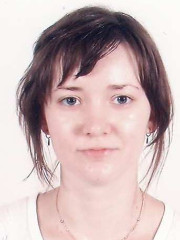
Presenter of 1 Presentation
A NOVEL TOOL FOR QUANTITATIVE ASSESSMENT OF LOWER LIMB PROPRIOCEPTION: A DEMONSTRATION WITH A STROKE SURVIVOR
Abstract
Background and Aims
Stroke is a common cause for proprioceptive impairments. Current clinical proprioception assessment methods are subjective and inconsistent. To address these limitations, we developed a quantitative assessment tool of lower limb proprioception.
Methods
We developed a tool using magnetic position trackers placed on the toes of the participants while laying on their sides. We evaluated the affected (A) and unaffected (U) limbs with ipsilateral (UU, AA) and contralateral (UA, AU) position matching conditions. We compared young adults and stroke survivors' mean-absolute-error (MAE), bias, and mean-variable-error (MVE). We defined a threshold of 90% of cumulative distribution in two targets to detect impairment and compared the conditions to isolate potential proprioceptive, motor or cognitive impairments. For example, impaired AU and AA would indicate a likely proprioceptive impairment of the affected limb.
Results
Conditions AU, AA and UU were impaired, suggesting potential proprioceptive and motor impairments of the affected and unaffected limbs, respectively, and a spatial memory impairment.
Conclusions
We demonstrated the tool's usage with a stroke survivor (Fig 1), who displayed potential impairments. Without confounding effects of fatigue, the patient likely suffered from proprioceptive and motor impairments in the affected and unaffected limbs, respectively.

Acknowledgments: Special acknowledgments to the Israeli Ministry of Science and Technology and the Multidisciplinary scholarship of Ben-Gurion University of the Negev for funding and Noy Goldhamer for assistance.
